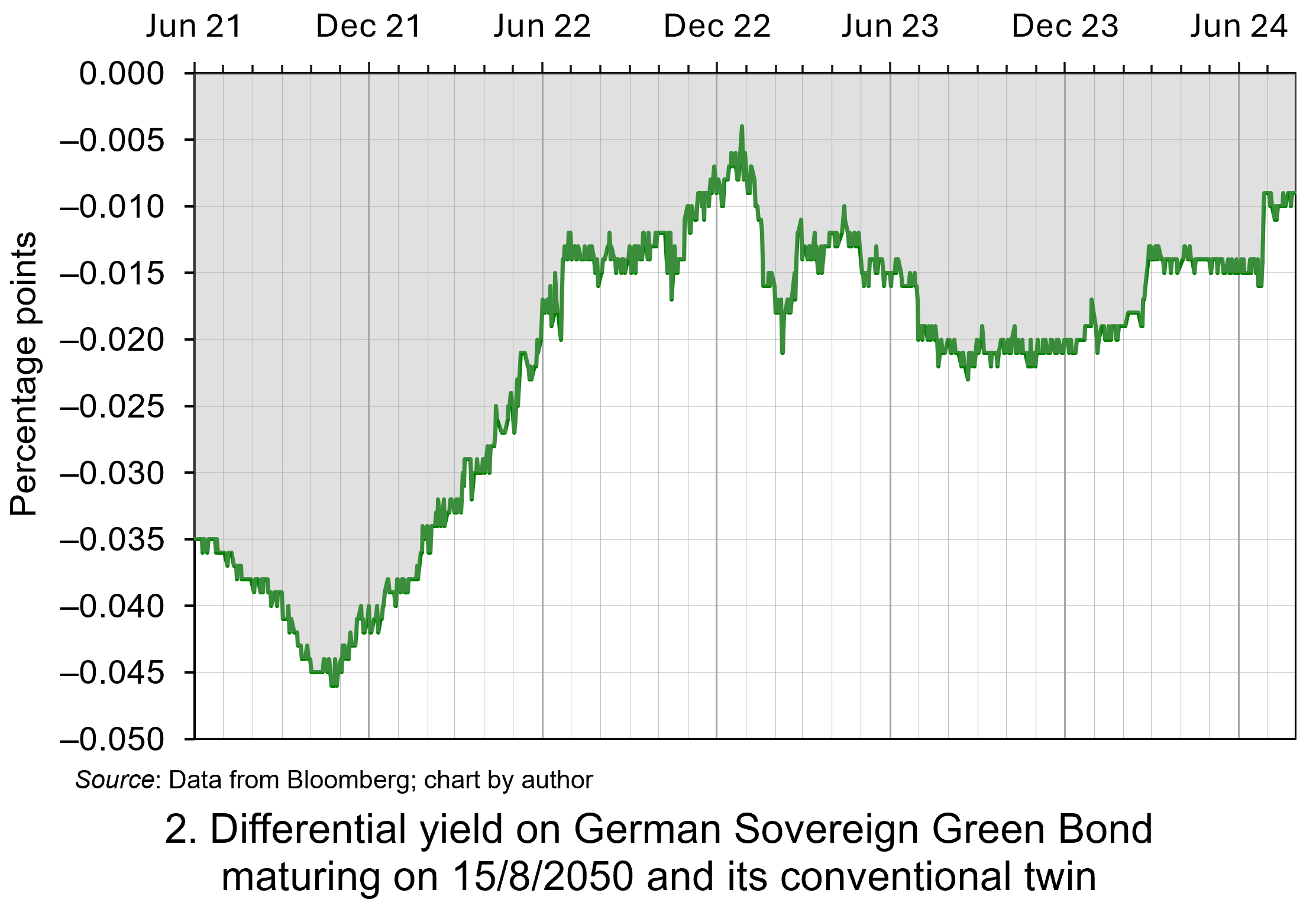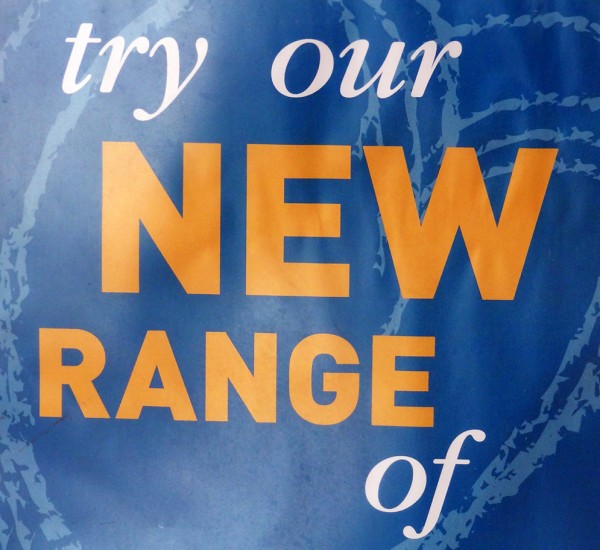 Sustainability has become one of the most pressing issues facing society. Patterns of human production and consumption have become unsustainable. On the environmental front, climate change, land-use change, biodiversity loss and depletion of natural resource are destabilising the Earth’s eco-system.
Sustainability has become one of the most pressing issues facing society. Patterns of human production and consumption have become unsustainable. On the environmental front, climate change, land-use change, biodiversity loss and depletion of natural resource are destabilising the Earth’s eco-system.
Furthermore, data on poverty, hunger and lack of healthcare show that many people live below minimum social standards. This has led to greater emphasis being placed on sustainable development: ‘development that meets the needs of the present without compromising the ability of future generations to meet their own needs’ (The Brundtland Report, 1987: Ch.2, para. 1).
The financial system has an important role to play in channelling capital in a more sustainable way. Since current models of finance do not consider the welfare of future generations in investment decisions, sustainable finance has been developed to analyse how investment and lending decisions can manage the trade-off inherent in sustainable development: sacrificing return today to enhance the welfare of future generations.
However, some commentators argue that such trade-offs are not required. They suggest that investors can ‘do well by doing good’. In this blog, I will use ‘green’ bonds (debt instruments which finance projects or activities with positive environmental and social impacts) to explain the economics underpinning sustainable finance and show that doing good has a price that sustainable investors need to be prepared to pay.
I will analyse why investors might not be doing so and point to changes which may be required to ensure financial markets channel capital in a way consistent with sustainable development.
The growth of sustainable finance
 Sustainable finance has grown rapidly over the past decade as concerns about climate change have intensified. A significant element of this growth has been in global debt markets.
Sustainable finance has grown rapidly over the past decade as concerns about climate change have intensified. A significant element of this growth has been in global debt markets.
Figure 1 illustrates the rapid growth in the issuance of sustainability-linked debt instruments since 2012. While issuance fell in 2022 due to concerns about rising inflation and interest rates reducing the real return of fixed-income debt securities, it rebounded in 2023 and is on course for record levels in 2024. (Click here for a PowerPoint.)
Green bonds are an asset class within sustainability-linked debt. Such bonds focus on financing projects or activities with positive environmental and social impacts. They are typically classified as ‘use-of-proceeds’ or asset-linked bonds, meaning that the proceeds raised from their issuance are earmarked for green projects, such as renewable energy, clean transportation, and sustainable agriculture. Such bonds should be attractive to investors who want a financial return but also want to finance investments with a positive environmental and/or social impact.
One common complaint from commentators and investors is the ‘greenium’ – the price premium investors pay for green bonds over conventional ones. This premium reduces the borrowing costs of the issuers (the ‘counterparties’) compared to those of conventional counterparties. This produces a yield advantage for issuers of green bonds (price and yield have a negative relationship), reducing their borrowing costs compared to issuers of conventional bonds.
An analysis by Amundi in 2023 using data from Bloomberg estimated that the average difference in yield in developed markets was –2.2 basis points (–0.022 percentage points) and the average in emerging markets was –5.6 basis points (–0.056 percentage points). Commentators and investors suggest that the premium is a scarcity issue and once there are sufficient green bonds, the premium over non-sustainable bonds should disappear.
However, from an economics perspective, such interpretations of the greenium ignore some fundamentals of economic valuation and the incentives and penalties through which financial markets will help facilitate more sustainable development. Without the price premium, investors could buy sustainable debt at the same price as unsustainable debt, earn the same financial return (yield) but also achieve environmental and social benefits for future generations too. Re-read that sentence and if it sounds too good to be true, it’s because it is too good to be true.
‘There is no such thing as a free lunch’
In theory, markets are institutional arrangements where demand and supply decisions produce price signals which show where resources are used most productively. Financial markets involve the allocation of financial capital. Traditional economic models of finance ignore sustainability when appraising investment decisions around the allocation of capital. Consequently, such allocations do not tend to be consistent with sustainable development.
In contrast, economic models of sustainable finance do incorporate such impacts of investment decisions and they will be reflected in the valuation, and hence pricing, of financial instruments. Investors, responding to the pricing signals will reallocate capital in a more sustainable manner.
 Let’s trace the process. In models of sustainable finance, financial instruments such as green bonds funding investments with positive environmental impacts (such as renewable energy) should be valued more, while instruments funding investments with negative environmental impacts (such as fossil fuels) should be valued less. The prices of the green bonds financing renewable energy projects should rise while the prices of conventional bonds financing fossil-fuel companies should fall.
Let’s trace the process. In models of sustainable finance, financial instruments such as green bonds funding investments with positive environmental impacts (such as renewable energy) should be valued more, while instruments funding investments with negative environmental impacts (such as fossil fuels) should be valued less. The prices of the green bonds financing renewable energy projects should rise while the prices of conventional bonds financing fossil-fuel companies should fall.
As this happens, the yield on the green bonds falls, lowering the cost of capital for renewable-energy projects, while yields on the bonds financing fossil-fuel projects rise, ceteris paribus. As with any market, these differential prices act as signals as to where resources should be allocated. In this case, the signals should result in an allocation consistent with sustainable development.
The fundamental point in this economic valuation is that sustainable investors should accept a trade-off. They should pay a premium and receive a lower rate of financial return (yield) for green bonds compared to conventional ones. The difference in price (the greenium), and hence yield, represents the return investors are prepared to sacrifice to improve future generations’ welfare. Investors cannot expect to have the additional welfare benefit for future generations reflected in the return they receive today. That would be double counting. The benefit will accrue to future generations.
A neat way to trace the sacrifice sustainable investors are prepared to make in order to enhance the welfare of future generations is to plot the differences in yields between green bonds and their comparable conventional counterparts. The German government has issued a series of ‘twin’ bonds in recent years. These twins are identical in every respect (coupon, face value, credit risk) except that the proceeds from one will be used for ‘green’ projects only.
 Figure 2 shows the difference in yields on a ‘green bond’ and its conventional counterpart, both maturing on 15/8/2050, between June 2021 and July 2024. The yield on the green bond is lower – on average about 2.2 basis points (0.022 percentage points) over the period. This represents the sacrifice in financial return that investors are prepared to trade off for higher environmental and social welfare in the future. (Click here for a PowerPoint.)
Figure 2 shows the difference in yields on a ‘green bond’ and its conventional counterpart, both maturing on 15/8/2050, between June 2021 and July 2024. The yield on the green bond is lower – on average about 2.2 basis points (0.022 percentage points) over the period. This represents the sacrifice in financial return that investors are prepared to trade off for higher environmental and social welfare in the future. (Click here for a PowerPoint.)
The yield spread fluctuates through time, reflecting changing perceptions of environmental concerns and hence the changing value that sustainable investors attach to future generations. The spread tends to widen when there are heightened environmental concerns and to narrow when such concerns are not in the news. For example, the spread on the twin German bonds reached a maximum of 0.045 percentage points in November 2021. This coincided with the 26th UN Climate Change Conference of the Parties (COP26) in Glasgow. The spread has narrowed significantly since early 2022 as rising interest rates and falling real rates of return on bonds in the near-term seem to have dominated investors’ concerns.
These data suggest that, rather than being too large, the greeniums are too small. The spreads suggest that markets in debt instruments do not seem to attach much value to future generations. The valuation, price and yield of green bonds are not significantly different from their conventional counterparts. This narrow gap indicates insufficient reward for better sustainability impact and little penalty for worse sustainability impact.
This pattern is repeated across financial markets and does not seem to be stimulating the necessary investment to achieve sustainable development. An estimate of the scale of the deficit in green financing is provided by Bloomberg NEF (2024). While global spending on the green energy transition reached $1.8 trillion in 2023, Bloomberg estimates that $4.8 trillion needs to be invested every year for the remainder of this decade if the world is to remain on track under the ‘net zero’ scenario. Investors do not seem to be prepared to accept the trade-off needed to provide the necessary funds.
Can financial markets deliver sustainable development?
Ultimately, the hope is that all financial instruments will be sustainable. In order to achieve that, access to finance would require all investors to incorporate the welfare of future generations in their investment decisions and accept sacrificing sufficient short-term financial return to ensure long-term sustainable development. Unfortunately, the pricing of green bonds suggests that investors are not prepared to accept the trade-off. This restricts the ability of financial markets to deliver an allocation of resources consistent with sustainable development.
There are several reasons why financial markets may not be valuing the welfare of future generations fully.
- Bounded rationality means that it is difficult for sustainable investors to assign precise values to future and distant benefits.
- There are no standardised sustainability metrics available. This produces great uncertainty in the valuation of future welfare.
- Investors also exhibit cognitive biases, which means they may not value the welfare of future generations properly. These include present bias (favouring immediate rewards) and hyperbolic discounting (valuing the near future more than the distant future).
- Economic models of financial valuation use discount rates to assess the value of future benefits. Higher discount rates reduce the perceived value of benefits occurring in the distant future. As a result, long-term impacts (such as environmental conservation) may be undervalued.
- There may be large numbers of investors who are only interested in financial returns and so do not consider the welfare of future generations in their investment decisions.
Consequently, investors need to be educated about the extent of trade-offs required to achieve the necessary investments in sustainable development. Furthermore, practical models which better reflect the welfare of future generations in investment decisions need to be employed. However, challenges persist in fully accounting for future generations and it may need regulatory frameworks to provide appropriate incentives for effective sustainable investment.
Articles
- The fallacy of ESG investing
Financial Times, Robert Armstrong (23/10/20)
- Energy Transition Investment Trends 2024: Executive Summary
BloombergNEF (30/1/24)
- ESG metrics trip up factor investors
Financial Times, Emma Boyde (1/11/21)
- Our Common Future: Report of the World Commission on Environment and Development
United Nations, Gro Harlem Brundtland (chair) (20/3/87)
 Who killed the ESG party?
Who killed the ESG party?FT Film, Daniel Garrahan (17/7/24)
- Green bond issuance surges as investors hunt for yield
Financial Times, Lee Harris (19/6/24)
- Investing for long-term value creation
Journal of Sustainable Finance & Investment, 9(4), Dirk Schoenmaker and Willem Schramade (19/6/19)
- Facts and Fantasies about the Green Bond Premium
Amundi working paper 102-2020, Mohamed Ben Slimane, Dany Da Fonseca and Vivek Mahtani (December 2020)
- Climate change and growth
Industrial and Corporate Change, 32 (2), 2023, Nicholas Stern and Joseph E Stiglitz (30/7/24)
Report
Data
Questions
- Using demand and supply analysis, illustrate and explain the impact of sustainable investing on the markets for (i) green bonds and (ii) conventional bonds. Highlight how this should produce an allocation of finance capital consistent with sustainable development.
- Research the yields on the twin bonds issued by Germany since this blog was published. Can you identify any association between heightened environmental concerns and the spread between the ‘green’ and conventional bond?
- Analyse the issues which prevent financial markets from producing the pricing signals which produce an allocation of resources consistent with sustainable development.
- Research some potential regulatory policies which may provide appropriate incentives for sustainable investment.
 On 15 March 2019, the ‘Organ Donation (Deemed Consent) Bill’ was passed into law. (See the blog, Organ donations – Changing the default option vs active choice.) The government has just announced that this will come into force on 20 May this year. Under the scheme, ‘adults in England will be considered potential donors unless they chose to opt out or are excluded. The act is known as Max and Keira’s law in honour of a boy who received a heart transplant and the girl who donated it.’
On 15 March 2019, the ‘Organ Donation (Deemed Consent) Bill’ was passed into law. (See the blog, Organ donations – Changing the default option vs active choice.) The government has just announced that this will come into force on 20 May this year. Under the scheme, ‘adults in England will be considered potential donors unless they chose to opt out or are excluded. The act is known as Max and Keira’s law in honour of a boy who received a heart transplant and the girl who donated it.’
This change from an ‘opt-in’ to an ‘opt-out’ system follows a similar a move in Wales in 2015. Since then, Wales has seen a significant increase in potential donors, with the consent rate rising from 58% to 77%. A similar move in Scotland will come into force in the autumn of this year. The government expects there to be an additional 700 transplant operations per year available for transplant by 2023.
These moves from an opt-in to an opt-out system are consistent with ‘nudge theory’. This maintains that positive reinforcement or making a decision easy for people can persuade them to make a particular choice. They are ‘nudged’ into so doing.
Opting out and nudge theory
In the case of having to opt in to a scheme such as organ donation, people have to make the decision to take part. Many, as a result, do not, partly because they never seem to find the time to do so, even though they might quite like to. With the busy lives people lead, it’s too easy to think, ‘Yes, I’ll do that some time’, but never actually get round to doing it: i.e. they have present bias and hence behave in a time-inconsistent manner.
 With an opt-out system, people are automatically signed up to the scheme, but can freely choose to opt out. In the case of the new organ donor schemes in the UK, it is/will be assumed that organs from people killed in an accident who had not opted out could be used for transplants. If you do not want your organs to be used, you have to notify that you are opting out.
With an opt-out system, people are automatically signed up to the scheme, but can freely choose to opt out. In the case of the new organ donor schemes in the UK, it is/will be assumed that organs from people killed in an accident who had not opted out could be used for transplants. If you do not want your organs to be used, you have to notify that you are opting out.
It could be the same with charitable giving. Some firms add a small charitable contribution to the price of their products (e.g. airline tickets or utility bills), unless people opt out.
Similarly, under UK pension arrangements introduced from 2012, firms automatically deduct pension contributions from employees’ wages unless they opt out of the scheme. Opt-out pension schemes like this retain between 90 and 95 per cent of employees. Opt-in pension schemes, by contrast, have much lower participation rates of around 60 per cent, even though they are otherwise identical.
This type of ‘nudging’ can improve the welfare of those who make systematic mistakes (i.e. operate in a time-inconsistent manner), while imposing very limited harm on those who act in a time-consistent manner. If it is in the interests of someone to opt out of the scheme, they can easily do so. Policies such as these are an example of what behavioural economists call ‘soft paternalism’.
Articles
- New opt-out model for organ donation to come into force in May
Pulse, Helen Quinn (25/2/20)
- Max and Keira’s law: New ‘opt-out’ organ donor system to be introduced on 20 May, government plans
Sky News, Greg Heffer (25/2/20)
- Adults to be automatically enrolled as organ donors under new law
Independent, Peter Stubley (26/2/20)
- Max and Keira’s law: New ‘opt-out’ organ donor system that presumes all adults agree to donate when they die will be introduced in May
Mail Online, Ben Spencer (25/2/20)
- Opt-out organ donation law: Your questions answered
New Scientist, Clare Wilson (27/2/20)
- Should organ donors be paid? The heavy toll of US kidney shortage
BBC News, US and Canada, Henri Astier (18/2/20)
- What Spain can teach Scotland about organ donation
BBC News, Scotland, Susie Forrest (18/10/19)
- A little nudge goes a long way in increasing organ donor registrations
The Conversation, Nicole Robitaille (2/5/19)
- How nudge theory is ageing well
Financial Times, Julian Baggini (19/4/19)
- Richard Thaler: ‘If you want people to do something, make it easy’
Financial Times, Tim Harford (2/8/19)
- Why a nudge from the state beats a slap
The Observer, Richard Reeves (30/7/08)
Official Information
Questions
- Why do opt-out schemes have a higher take up than opt-in ones? Would this apply if people behaved in a time-consistent manner?
- What is present bias? How does it differ from simple impatience? Explain how present bias might help to explain the impact of changing the default option.
- What are the arguments for and against nudging people to make decisions that benefit them or are in the social interest?
- Give some example of nudges that are used in public policy or would be a good idea to use. Consider how effective they are likely to be. (You might refer to the work of the Behavioural Insights Team.)
- What are the possible drawbacks of presumed consent in organ donation?
- What are the arguments for and against paying live people to donate organs, such as a kidney?
- How might people be encouraged to behave in the right way during an epidemic, such as corona virus?
- To what extent was nudge theory used during the Brexit referendum campaign and in the two subsequent general elections?
 When making a decision, what happens if you do nothing: i.e. take no action? The answer is the default option. There is evidence that changing the default option for the same decision can sometimes have a big impact on the final choices people make. For example, when a person starts a new job, they often have to decide whether to contribute to the company’s pension scheme. The default option is typically for employees not to contribute. They have to do something actively (e.g. fill in an online form) to opt in to the scheme. An alternative is to change the default option so that employees are contributing to the pension. They now have to do something to opt out of the scheme.
When making a decision, what happens if you do nothing: i.e. take no action? The answer is the default option. There is evidence that changing the default option for the same decision can sometimes have a big impact on the final choices people make. For example, when a person starts a new job, they often have to decide whether to contribute to the company’s pension scheme. The default option is typically for employees not to contribute. They have to do something actively (e.g. fill in an online form) to opt in to the scheme. An alternative is to change the default option so that employees are contributing to the pension. They now have to do something to opt out of the scheme.
Changing the default should have no impact on people who behave in ways that are consistent with the rational choice model in economics. However, research by Madrian and Shea (2001) found that it had a big effect. When employees had to opt-in, 49 per cent enrolled in a company pension. When they had to opt out, the figure increased to 86 per cent.
Other research suggests that defaults can influence the likelihood of getting a flu jab, making healthier food choices, receiving e-mail marketing and choosing certain types of car insurance.
Organ donation
One policy area where the choice of default has become a topical issue is organ donation. In 2017, over 400 people died in the UK because it was impossible to find an appropriate donor. Could changing the default increase the number of donors?
The scheme that operates in England requires people to sign-up to the organ donor register: i.e. they have to opt in. Although 80 per cent of the public support organ donation less than 50 per cent ever get around to signing this register.
Parliament recently approved the Organ Donation Bill and the new law will come into effect in 2020. The default position will change so that people are automatically signed-up for organ donation. If they do not want to donate their organs, they will have to opt out of the register.
In December 2015, the devolved Welsh government introduced a similar scheme. Although it is quite early to give a full assessment of the policy, its impact has been smaller than many people had hoped.
Why have the initial results been disappointing? One potential downside with an opt-out scheme is that it may create greater uncertainty about someone’s true wishes. With an opt-in scheme, a relative takes a deliberate action to indicate their preference to be an organ donor. In England, approximately 10 per cent of families overrule the wishes of a relative who has actively signed the register.
With an opt-out scheme, family members may worry that their relative did not want to donate their organs but never found the time to take their name off the register. In 2017/18, families in Wales overruled the presumed consent of their relatives in 33 per cent of cases.
Some countries, such as Singapore and Austria, operate a ‘hard opt-out’ policy. In these schemes, families cannot overrule and this leads to high organ donor rates. However, this type of policy is unpopular with large sections of the electorate who feel it is over paternalistic.
Forcing people to make a choice
Is it possible to force people to make a choice and so reveal their preferences to others? This is a policy of active choice. For example, the government could make the issuing of a driving licence conditional on a people making a choice about whether or not to sign the organ donor register.
 This type of policy has been trialled in the USA with the take up of home delivered prescriptions. For the majority of people, there are clear advantages of choosing to have home delivered prescriptions rather than visiting a pharmacy – it is both cheaper and involves less time/hassle. However, the default option is to visit a pharmacy and one study found that only 6 per cent of people chose home delivered options. With the introduction of active choice, this figure increased to 42 per cent.
This type of policy has been trialled in the USA with the take up of home delivered prescriptions. For the majority of people, there are clear advantages of choosing to have home delivered prescriptions rather than visiting a pharmacy – it is both cheaper and involves less time/hassle. However, the default option is to visit a pharmacy and one study found that only 6 per cent of people chose home delivered options. With the introduction of active choice, this figure increased to 42 per cent.
Some have argued that it is socially undesirable to force people to make a choice. An alternative is simplified active choice – people can either make a choice or accept the default option.
Articles
Questions
- Explain why changing the default option should have no impact on people who behave in ways that are consistent with the rational choice model in economics.
- What is present bias? How does it differ from simple impatience? Explain how present bias might help to explain the impact of changing the default option.
- What is loss aversion? How does it differ from diminishing marginal utility? Explain how loss aversion might help to explain the impact of changing the default option.
- What are some of the limitations of using defaults in policy-making?
- Is active choice less paternalistic than changing the default option?
- Think of some reasons why someone may not want to make a choice.
 We are coming into the big spending season, with Black Friday, Cyber Monday, the run-up to Christmas and then the winter sales. So will we all be rational maximisers and weigh up the utility we expect to receive from items against the price we pay (plus any other cost, such as time spent searching/shopping)? Or will we use a set of heuristics which make life easier and that we have found to be useful in helping us choose – heuristics such as buying things we’ve liked before, or going for things on special offer?
We are coming into the big spending season, with Black Friday, Cyber Monday, the run-up to Christmas and then the winter sales. So will we all be rational maximisers and weigh up the utility we expect to receive from items against the price we pay (plus any other cost, such as time spent searching/shopping)? Or will we use a set of heuristics which make life easier and that we have found to be useful in helping us choose – heuristics such as buying things we’ve liked before, or going for things on special offer?
The answer is that we do probably use a set of heuristics, at least for many items. And don’t the retailers and the marketing firms they employ know this!

They will use all sorts of tricks of the trade to persuade us to part with our money. These tricks are designed to nudge us (or push us), without us feeling manipulated or conned – at least until we’ve bought their product.
And the tricks are getting more sophisticated. They include special offers which are not as good as they seem, time-limited offers which stimulate us to buy quickly without carefully thinking about what we’re doing, cunning positioning of products in shops to encourage us to buy things we had not planned to buy, adverts which play to our idealised perceptions or the ‘good life’ or what we would like to achieve, and packaging or display which make the product seem better than it is.

Also we are increasingly faced with targeted advertising where our smart devices capture information about our spending habits and tastes through our previous online spending or our search behaviour. This is then fed to advertisers to tailor adverts specifically to us on our mobiles, tablets, laptops and even, soon, on our smart TVs.
We may have a general desire to maximise utility from our spending, but market failures, such as consumers having imperfect information about products and a present bias (see also) in decision making, make us easy targets for the advertising and marketing industry. They understand the heuristics we use and try to take maximum advantage of them.
Happy shopping!
Articles
How shops use tricks to get you spending The Conversation, Cathrine Jansson-Boyd (16/11/17)
ColourPop looks to Qubit for next-gen personalization guidance Retail Dive, Dan O’Shea (13/6/17)
Channel 4 to offer 100% ad targeting across All 4 platform, seeking partners for linear equivalent The Drum, Jessica Goodfellow (14/11/17)
How Google aims to bring TV advertising into the 21st century The Drum, Ronan Shields (19/10/17)
How to Use Heuristics to Your Marketing Advantage MarketingProfs, Cam Secore (12/11/15)
Questions
- Does the use of heuristics contradict the assumption that consumers behave rationally?
- Give some examples of heuristics that you yourself use.
- Other than those identified above and in the first article, what ‘tricks’ might companies play on you to persuade you to buy their products?
- Is advertising personally targeted to individual consumers desirable for them?
- Give some examples of present bias in people’s behaviour.
- What factors should a retailer take into account when deciding whether to make pre-Christmas discounts?
- Explain what is meant by ‘affect heuristic’ and how the advertising industry uses the concept in setting the background to or scenario of an advertisement.
- Have you ever been persuaded into buying something you didn’t want? Why were you persuaded?
 The annual Sveriges Riksbank Prize in Economic Sciences in Memory of Alfred Nobel, normally known as the Nobel Prize in Economics, has been awarded 49 times since it was founded in 1969. Many well-known economists have been recipients of the award. This year it had been awarded to Richard Thaler for his research in behavioural economics. The award recognises his work in integrating economics with psychology.
The annual Sveriges Riksbank Prize in Economic Sciences in Memory of Alfred Nobel, normally known as the Nobel Prize in Economics, has been awarded 49 times since it was founded in 1969. Many well-known economists have been recipients of the award. This year it had been awarded to Richard Thaler for his research in behavioural economics. The award recognises his work in integrating economics with psychology.
Richard H. Thaler has incorporated psychologically realistic assumptions into analyses of economic decision-making. By exploring the consequences of limited rationality, social preferences, and lack of self-control, he has shown how these human traits systematically affect individual decisions as well as market outcomes.
In total, Richard Thaler’s contributions have built a bridge between the economic and psychological analyses of individual decision-making. His empirical findings and theoretical insights have been instrumental in creating the new and rapidly expanding field of behavioural economics, which has had a profound impact on many areas of economic research and policy.
Instead of making the assumption that people are rational maximisers, behavioural economists look at how people actually behave and respond to various incentives.
For example, people may be motivated by concepts of fairness and be prepared to make personal sacrifices for the sake of others. Such concepts of fairness tend to depend on the social context in which choices are made and can be influenced by the way choices are framed.
Also people may not weigh up costs and benefits but use simple rules of thumb, or heuristics, when making decisions. This might be an example of rational behaviour when time or information is limited, but the use of such heuristics often becomes engrained in behaviour and the rules become just habit.
People may also suffer from a lack of willpower or ‘present bias’. They may spend more than they can afford because they cannot resist the temptation to have a product. They may overeat because of the short-term pleasure it brings and ignore the long-term effects on their health.
 Understanding how people make choices and the temptations to which they succumb can help policymakers devise incentives to change behaviour to achieve various social goals.
Understanding how people make choices and the temptations to which they succumb can help policymakers devise incentives to change behaviour to achieve various social goals.
One type of incentive is nudging. A well-known example is people’s choice about whether to become an organ donor in the event of their death. If people are required to opt in to such a scheme, they may never get round to doing so. However, if they are required to opt out if they do not want to participate, many more people would thereby be donors and more organs would become available.
Another form of nudge is making desirable things fun. A well-known experiment here was encouraging people to use the stairs rather than the escalator when exiting a subway by making the stairs like a musical keyboard. See here for more examples.
The UK government set up a Behavioural Insights Team – also known as the Nudge Unit (now independent of government) to find ways of encouraging people to behave in their own or society’s best interests.
But it is not just governments which use the insights of behavioural economists such as Thaler. The advertising and marketing industry is always examining the most effective means of influencing behaviour. A classic example is the loss leader, where consumers are tempted into a shop with a special offer and then end up buying more expensive items there rather than elsewhere.
Firms and advertisers know only too well the gains from tempting people to buy items that give them short-term gratification – such as putting chocolate bars by the tills in supermarkets.
 Understanding consumer psychology helps firms to manipulate people’s choices. And such manipulation may not be in our best interests. If we are being persuaded to buy this product or that, are we fully aware of what’s going on and how our tastes are being affected? Would we, by standing back and reflecting, make the same choices as we do on impulse or out of habit?
Understanding consumer psychology helps firms to manipulate people’s choices. And such manipulation may not be in our best interests. If we are being persuaded to buy this product or that, are we fully aware of what’s going on and how our tastes are being affected? Would we, by standing back and reflecting, make the same choices as we do on impulse or out of habit?
And governments too can seek to manipulate people in ways that some may find undesirable. Governments may try to influence us to follow their particular political agenda – as may newspapers. Certainly, during election or referendum campaigns, we are being nudged to vote a particular way.
It is important then for us to understand when we are being nudged or otherwise persuaded. Do we really want to behave in that way? Just as it is important, then, for governments and firms to understand individuals’ behaviour, so too it is important for individuals to understand their own behaviour.
Articles
Richard Thaler’s work demonstrates why economics is hard The Economist, RA (11/10/17)
Nobel in Economics Is Awarded to Richard Thaler The New York Times, Binyamin Appelbaum (9/10/17)
The Making of Richard Thaler’s Economics Nobel The New Yorker, John Cassidy (10/10/17)
Nobel prize in economics awarded to Richard Thaler The Guardian, Richard Partington (10/10/17)
Richard Thaler is a controversial Nobel prize winner – but a deserving one The Guardian, Robert Shiller (11/10/17)
What the mainstreaming of behavioural nudges reveals about neoliberal government The Conversation, Rupert Alcock (17/10/17)
This year’s economics Nobel winner invented a tool that’s both brilliant and undemocratic Vox, Henry Farrell (16/10/17)
How a critic of economics became the disciplines Nobel-winning best friend The Guardian, Tiago Mata and Jack Wright (25/10/17)
Podcast
 How Richard Thaler changed economics BBC, More of Less, Tim Harford (14/10/17)
How Richard Thaler changed economics BBC, More of Less, Tim Harford (14/10/17)
Questions
- For what reasons may individuals not always weigh up the costs and benefits of purchasing an item?
- Give some examples of the use of heuristics in making consumption decisions?
- Is the use of heuristics irrational?
- Explain how people considering that they have behaved fairly is influenced by the social context of their behaviour?
- Find out what is meant by the Dictator Game and how it can challenge the assumption that people behave selfishly. How is the ‘dictator’s’ behaviour affected by the possible payoffs?
- Thaler suggested that Brexit could be an example of behavioural economics in action. Find out what he meant by this. Do you agree?
- Give some examples of ways in which the government can nudge people to persuade them to behave in socially or individually desirable ways.
- Find out what is meant by the ‘endowment effect’ and how it influences people’s valuation of items they own.
- Why may nudging by governments be undemocratic?
 Sustainability has become one of the most pressing issues facing society. Patterns of human production and consumption have become unsustainable. On the environmental front, climate change, land-use change, biodiversity loss and depletion of natural resource are destabilising the Earth’s eco-system.
Sustainability has become one of the most pressing issues facing society. Patterns of human production and consumption have become unsustainable. On the environmental front, climate change, land-use change, biodiversity loss and depletion of natural resource are destabilising the Earth’s eco-system. Sustainable finance has grown rapidly over the past decade as concerns about climate change have intensified. A significant element of this growth has been in global debt markets.
Sustainable finance has grown rapidly over the past decade as concerns about climate change have intensified. A significant element of this growth has been in global debt markets. Let’s trace the process. In models of sustainable finance, financial instruments such as green bonds funding investments with positive environmental impacts (such as renewable energy) should be valued more, while instruments funding investments with negative environmental impacts (such as fossil fuels) should be valued less. The prices of the green bonds financing renewable energy projects should rise while the prices of conventional bonds financing fossil-fuel companies should fall.
Let’s trace the process. In models of sustainable finance, financial instruments such as green bonds funding investments with positive environmental impacts (such as renewable energy) should be valued more, while instruments funding investments with negative environmental impacts (such as fossil fuels) should be valued less. The prices of the green bonds financing renewable energy projects should rise while the prices of conventional bonds financing fossil-fuel companies should fall. Figure 2 shows the difference in yields on a ‘green bond’ and its conventional counterpart, both maturing on 15/8/2050, between June 2021 and July 2024. The yield on the green bond is lower – on average about 2.2 basis points (0.022 percentage points) over the period. This represents the sacrifice in financial return that investors are prepared to trade off for higher environmental and social welfare in the future. (Click here for a PowerPoint.)
Figure 2 shows the difference in yields on a ‘green bond’ and its conventional counterpart, both maturing on 15/8/2050, between June 2021 and July 2024. The yield on the green bond is lower – on average about 2.2 basis points (0.022 percentage points) over the period. This represents the sacrifice in financial return that investors are prepared to trade off for higher environmental and social welfare in the future. (Click here for a PowerPoint.) Who killed the ESG party?
Who killed the ESG party? On 15 March 2019, the ‘Organ Donation (Deemed Consent) Bill’ was passed into law. (See the blog,
On 15 March 2019, the ‘Organ Donation (Deemed Consent) Bill’ was passed into law. (See the blog,  With an opt-out system, people are automatically signed up to the scheme, but can freely choose to opt out. In the case of the new organ donor schemes in the UK, it is/will be assumed that organs from people killed in an accident who had not opted out could be used for transplants. If you do not want your organs to be used, you have to notify that you are opting out.
With an opt-out system, people are automatically signed up to the scheme, but can freely choose to opt out. In the case of the new organ donor schemes in the UK, it is/will be assumed that organs from people killed in an accident who had not opted out could be used for transplants. If you do not want your organs to be used, you have to notify that you are opting out.  When making a decision, what happens if you do nothing: i.e. take no action? The answer is the default option. There is evidence that changing the default option for the same decision can sometimes have a big impact on the final choices people make. For example, when a person starts a new job, they often have to decide whether to contribute to the company’s pension scheme. The default option is typically for employees not to contribute. They have to do something actively (e.g. fill in an online form) to opt in to the scheme. An alternative is to change the default option so that employees are contributing to the pension. They now have to do something to opt out of the scheme.
When making a decision, what happens if you do nothing: i.e. take no action? The answer is the default option. There is evidence that changing the default option for the same decision can sometimes have a big impact on the final choices people make. For example, when a person starts a new job, they often have to decide whether to contribute to the company’s pension scheme. The default option is typically for employees not to contribute. They have to do something actively (e.g. fill in an online form) to opt in to the scheme. An alternative is to change the default option so that employees are contributing to the pension. They now have to do something to opt out of the scheme. This type of policy has been trialled in the USA with the take up of home delivered prescriptions. For the majority of people, there are clear advantages of choosing to have home delivered prescriptions rather than visiting a pharmacy – it is both cheaper and involves less time/hassle. However, the default option is to visit a pharmacy and one study found that only 6 per cent of people chose home delivered options. With the introduction of active choice, this figure increased to 42 per cent.
This type of policy has been trialled in the USA with the take up of home delivered prescriptions. For the majority of people, there are clear advantages of choosing to have home delivered prescriptions rather than visiting a pharmacy – it is both cheaper and involves less time/hassle. However, the default option is to visit a pharmacy and one study found that only 6 per cent of people chose home delivered options. With the introduction of active choice, this figure increased to 42 per cent.




